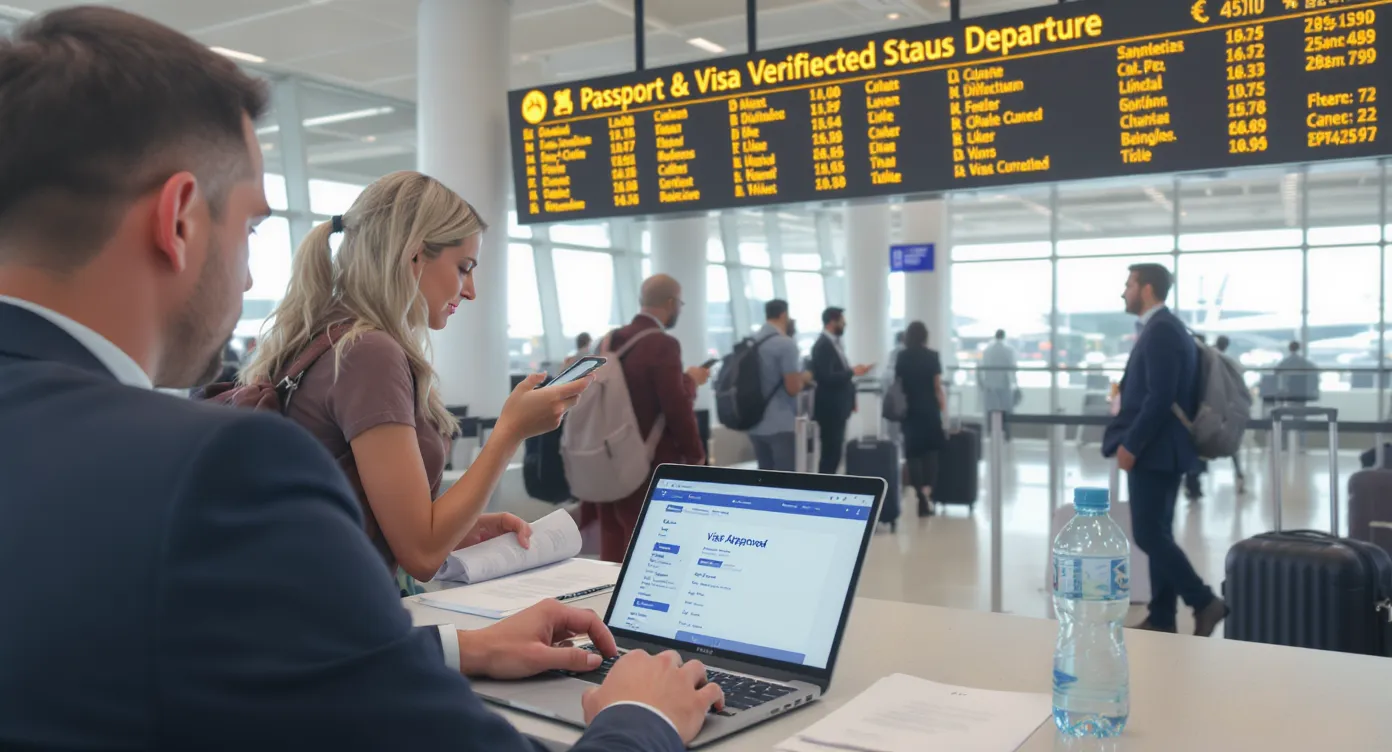Choosing a Visa Processing Service: Key Questions

International travel is booming again—UNWTO projects 2 billion cross-border trips by 2026—and every one of those journeys must clear an invisible wall of visa rules. For airlines, OTAs, cruise lines, and tour operators, the stakes are high: an incorrect visa recommendation can lead to denied boarding fines of up to US $3,500 per passenger (IATA Resolution 830a). Choosing the right visa processing service, therefore, is not only an operational question; it’s a revenue and reputational imperative.
Below is a practical, question-driven framework you can use to evaluate any visa processing partner, whether you plan to embed an API, launch a white-label portal, or outsource back-office processing. Feel free to copy-and-paste these questions into your RFP.

1. Business Alignment: Why Are We Adding Visa Services?
Before diving into technical details, clarify your internal objectives. Typical goals include:
- Reducing support calls and chargebacks linked to visa issues.
- Generating ancillary revenue through convenience fees or revenue share.
- Lifting booking conversion by surfacing eligibility criteria early.
Key questions to ask providers:
- Which KPIs have your existing partners improved, and by how much?
- Can you share quantified case studies relevant to my vertical (airline, OTA, cruise)?
- How does the commercial model (flat fee, per-application, rev-share) map to our revenue goals?
👉 Recommended read: Travel Document Automation 101 for a deeper look at ROI levers.
2. Coverage and Accuracy: Do You Handle the Routes We Sell?
A slick UI is useless if the underlying rule engine is incomplete or outdated. Misdirected passengers hurt NPS—and your wallet.
Questions to probe:
- What percentage of global routes and passport combinations does your database cover?
- How frequently are rules refreshed, and what primary sources (IATA Timatic, government APIs, gazettes) feed your engine?
- Do you include emerging digital permits such as ETIAS, K-ETA, or UK ETA?
- How is edge-case logic (dual citizenship, one-way tickets, COVID documentation) handled?
Tip: Ask for a live “stump the system” demo using complex itineraries (multi-leg cruise, mixed modes, split PNRs) to validate depth.
3. Integration Flexibility: Can We Go Live in Weeks, Not Months?
Your engineering resources are finite. An ideal partner offers multiple paths:
| Integration Model | Engineering Effort | Typical Go-Live | UX Control |
|---|---|---|---|
| No-code widget | None | <2 weeks | Low |
| White-label portal | Low (branding) | 2–4 weeks | Medium |
| REST/GraphQL API | Moderate | 4–8 weeks | High |
Questions to ask:
- Is there a sandbox with deterministic test cards and webhooks?
- Do SDKs exist for common stacks (React, Node, PHP, Java, iOS, Android)?
- Can the widget auto-localize copy and currency based on user locale?
- How are version upgrades and breaking changes communicated?
👉 If you’re weighing models, see API vs. White-Label App: Which Visa Integration Model Suits You?.
4. Security & Compliance: How Will You Protect Our Customers’ Data?
Visa applications contain passports, biometrics, and payment data—exactly what cybercriminals crave. Regulators are watching too: GDPR fines can eclipse the revenue you hope to earn.
Must-ask questions:
- What encryption standards protect data in transit and at rest (TLS 1.3, AES-256, key rotation)?
- Do you support universal MFA and biometric liveness checks for applicants?
- Which certifications do you hold (ISO 27001, SOC 2, PCI DSS)?
- How is PII deleted or tokenised post-approval?
- Do you provide immutable audit logs for compliance investigations?
👉 Cross-reference with our 8-point checklist in Top Security Features to Demand in Any Electronic Visa Solution.
5. User Experience: Will Travelers Actually Complete the Form?
Form-abandonment rates for visa flows can exceed 40 %. Look for a provider that treats UX as performance marketing.
Evaluation questions:
- Do you offer progressive disclosure so users only see fields relevant to them?
- Is instant OCR document capture available to auto-fill fields from a passport photo?
- Are all steps fully responsive and WCAG-AA accessible?
- How many clicks from payment to confirmation? (Benchmark: 6 or fewer.)
For quick wins, see our UX playbook Why Travelers Abandon Visa Forms—and 6 UX Fixes That Convert.
6. Commercial Terms: What Does Success Cost—and Pay?
Even with a strong ROI case, you need transparent T&Cs.
Questions to clarify:
- Is pricing per lookup, per submitted application, or per approval?
- Are there minimums, implementation fees, or seat licenses?
- What revenue-share splits can be negotiated at scale?
- How are refunds handled if an application is rejected?
- Are SLA credits provided for downtime or rule inaccuracies?
Pro tip: Model attach-rate scenarios (e.g., 5 % uptake, $15 fee) to see sensitivity.
7. Performance & Reporting: Can We See What Works—and Fix What Doesn’t?
Data-driven teams need granular metrics. Ask providers to surface:
- Real-time dashboard of submission, approval, and revenue numbers.
- Funnel breakdown (eligibility check → started form → paid → submitted → approved).
- API/webhook events for BI ingestion.
Benchmark KPIs to track after launch include visa-related conversion rate, ancillary revenue per booking, and average application completion time—outlined in 5 KPIs to Track After Deploying a Visa Management Platform.
8. Support & SLAs: Who Picks Up the Phone at 02:00 UTC?
Visas don’t sleep, and neither do global travelers.
Key questions:
- What is standard support coverage (timezone, languages, channels)?
- Do you guarantee first-response times for P1 issues?
- Is white-label end-user chat included or extra?
- How do you train our support agents—do you provide a knowledge base or certification program? (See How to Train Customer Support Teams on eVisa Rules in One Week.)
9. Future-Proofing: Will the Platform Evolve With Regulatory Change?
Digital borders move fast—ETIAS alone has shifted its go-live date three times.
Future-oriented questions:
- What is your public product roadmap for the next 12 months?
- How do you prioritise new permit types or destination rollouts?
- Are you investing in emerging tech (digital identity wallets, blockchain credentialing, AI fraud scoring)?
- Can we influence the roadmap through a steering committee or beta program?
A partner that remains stagnant will eventually become technical debt.
10-Point Provider Checklist (Print This)
| # | Question | Pass/Fail |
|---|---|---|
| 1 | Demonstrated KPI uplift in my sector | |
| 2 | 95 %+ global coverage, refreshed daily | |
| 3 | Multiple integration paths with sandbox | |
| 4 | ISO 27001 or SOC 2 certified | |
| 5 | WCAG-AA compliant responsive UX | |
| 6 | Clear, scalable pricing & rev-share | |
| 7 | Real-time dashboards & webhooks | |
| 8 | 24/7 multilingual support with SLA | |
| 9 | Roadmap for ETIAS, UK ETA, digital ID | |
| 10 | Referenceable clients with similar use cases |
Check off at least eight boxes before moving a vendor to the short list.

Frequently Asked Questions
How many visa applications does a mid-size OTA typically convert? Industry data show attach rates between 5 % and 12 %, with Southeast Asia and GCC routes topping the charts. Optimised UX and personalised messaging can double baseline numbers.
Do we need both an API and a white-label portal? Many brands launch with a white-label portal for speed, then add an API for deeper in-flow upsells once ROI is proven.
What happens if a traveler is denied? Best-in-class platforms offer instant denial detection, plain-English refusal reports, and one-click reapplication workflows—mitigating passenger frustration and salvaging revenue.
Ready to Evaluate SimpleVisa?
Choosing a visa processing service can feel like navigating a regulatory minefield, but the right questions illuminate the path. SimpleVisa powers friction-free border crossings on 400 + partner sites, combining a 98 % approval rate with plug-and-play integrations and bank-grade security.
Book a 20-minute demo today to see how SimpleVisa stacks up against your checklist—and start turning compliance into profit.